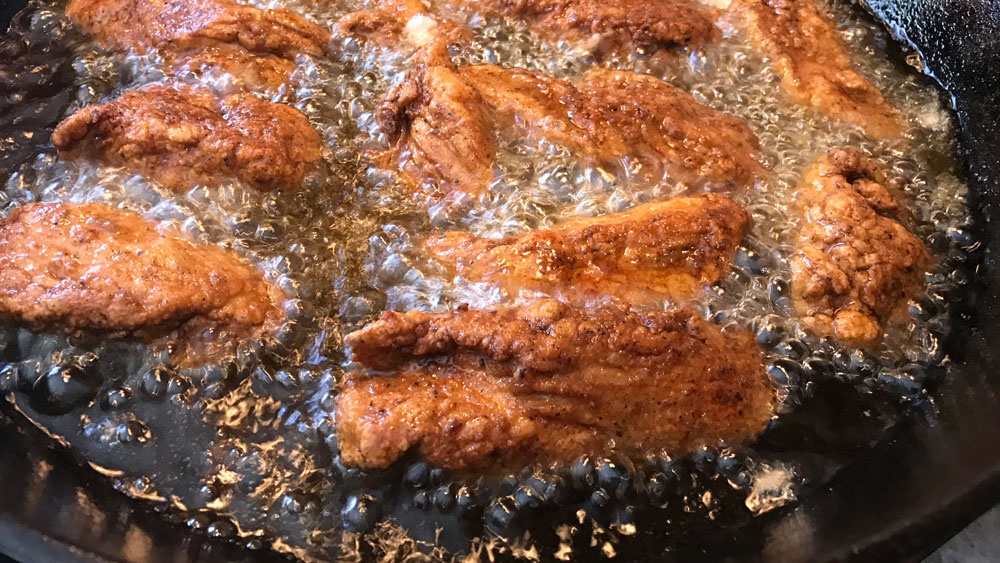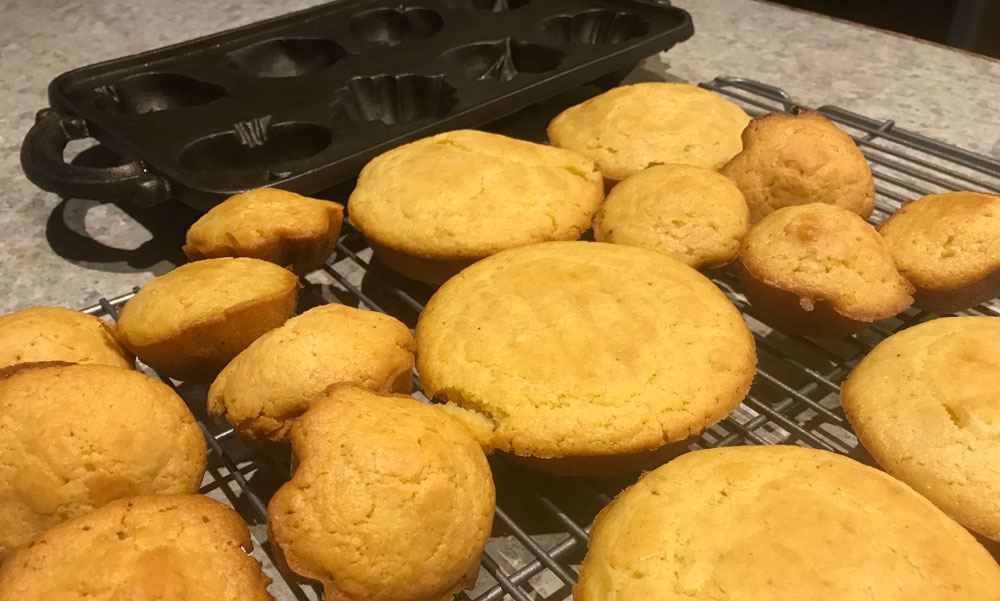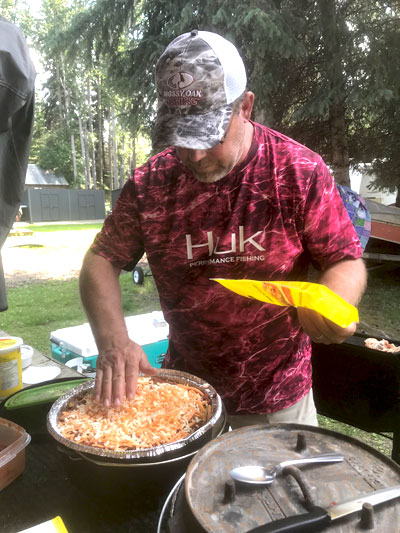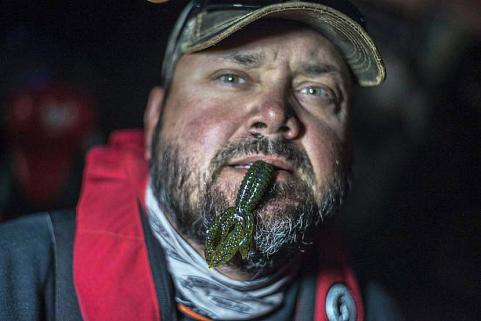by Brad Fenson with video from Jeremiah Doughty of From Field to Plate
The loud, sizzle of fresh meat finding the surface of a frying pan is unmistakable. Your olfactory senses kick into overdrive, as you catch a whiff of the thick, seasoned crust searing onto the surface of your meat. The distinct smells and tastes of cast-iron-prepared foods usually leave you salivating and wanting to cook more.
Cooking with cast iron pots and pans has been popular for hundreds of years. The heavy vessels, properly seasoned, are incredible for providing even and consistent heat. They can be used over any heat source and do just as well on a fire as they do on a camp stove or home range.
Cast iron pans are thick and heavy, which is part of their magic. They heat up relatively fast, holding the higher temperatures even when food is added. The transfer of heat is fast and efficient, allowing a cook to brown meat, caramelize onions and other vegetables, or even build a stew with little effort.
Venison steak with some simple seasonings can be transformed into a gourmet meal in a matter of minutes. The brown, rich-tasting crust created on the meat by utilizing high heat through iron is unmistakable. It is often a classic meal in deer camp, or a daily standard in any home when cast iron is used regularly.
Cast iron pots and pans are so versatile they are often used for deep frying, as it is easy to maintain the heat of the oil in a thick iron pot. Thin-walled pots do not hold heat, which means the second you add food to the oil the temperature drops drastically. With cast iron, there is only a slight drop, and the recovery time is much quicker.

Dutch ovens have been used for centuries to prepare flavorful meals for big crowds, or when you needed to get ahead of the game by having food to reheat. Pioneers and settlers historically made stew, beans, chili, and other dishes. The same earthy flavors can be developed today by starting with an iron pot.
One of the best ways to cook up a fattened mallard is to pluck the bird and remove the breast, legs, and thighs with skin on. The breasts can be boneless. Heat a cast iron frying pan in the oven to 500°F and place the duck in the pan, skin side down. The extreme heat will sear the skin to a crispy, rich brown, and the fat will naturally render out from under the skin. In five minutes, turn the duck parts to cook meat side down in the rendered fat. Cook for six minutes and remove from the pan. There are few other ways to cook duck with the crisp skin, natural flavors from the fat, and still have it medium to medium-rare to ensure it is moist and juicy.
Cast-Iron Skillet Cornbread

Ingredients:
- ½ cup butter
- ⅔ cup white sugar
- 2 eggs
- 1 cup buttermilk
- ½ teaspoon baking soda
- 1 cup cornmeal
- 1 cup flour
- ½ teaspoon salt
Directions:
- Soften or melt the butter and stir in sugar. Add eggs and beat into the mixture until well blended.

- Combine buttermilk with baking soda and stir into mixture in pan. Stir in cornmeal, flour, and salt until well blended, and few lumps remain and pour into a seasoned 10-inch cast iron skillet.
- Bake in the preheated oven at 375° F (175°C) for 30 to 40 minutes, or until a toothpick inserted in the center comes out clean. Do not over bake (it will get very dry).
*If you don’t have buttermilk, you could make a substitute by adding 1 tablespoon of vinegar to 1 cup of milk and let sit for 5 minutes.
Steak Rub
Ingredients:
- 2 tsp brown sugar
- 1 tsp ginger
- 1 tsp smoked paprika
- 1 tsp onion powder
- 1 tsp garlic powder
- 1 tsp black pepper
- 1 tsp cumin
- 1 tsp salt
Directions:
- Mix all ingredients in a small bowl.
- Apply a generous amount of the spice mixture to your venison and rub in making sure to coat all sides. Keep adding more spice until excess falls off the meat onto your board.
- Heat 2 tablespoons of peanut or canola oil in a Camp Chef cast iron frying pan and sear the meat for about 3 minutes per side. Remove pan from heat and cover with a lid or foil to let the meat rest for 5 minutes and slowly finish cooking.

Need wild game meat for a recipe you've been wanting to try? Check out GameKeeper Butchery. GameKeeper Butchery is dedicated to procuring the finest assortment and highest quality of specialty meats from the United States and around the world. Our commitment is to deliver the safest, freshest and most wholesome products.































